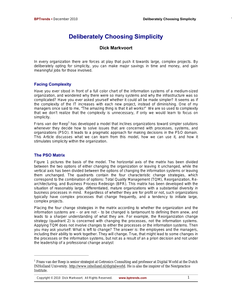The hard side in total quality management of measurement and data analysis can only be successful if it is replenished with the soft side, the people side. This conclusion has serious consequences for the education of professionals, especially managers. Managers should be trained in soft skills, trained in managing themselves and their relations with others. The recent research done by Meduprof-S focuses on the question which skills are needed and on the extent to which business schools quality standards consider soft skills to be important in the education of managers .
DOCUMENT

Purpose - This paper provides an overview on the technical and vocational education and training (TVET) program components/mechanisms and their overall effect on learning outcomes in a developing country context. Design/methodology/approach - Using secondary data, this descriptive case study integrates the realistic evaluation framework of Pawson and Tilley (1997) with Total Quality Management (TQM) frameworks. Findings - Ethiopia's TVET system adopts/adapts international best practices. Following the implementation of the 2008 TVET strategy, the proportion of formal TVET graduates who were recognized as competent by the assessment and certification system increased from 17.42 percent in 2009/2010 to 40.23 percent in 2011/2012. Nevertheless, there is regional variation. Research limitations/implications - Outcome-based TVET reforms that are based on TQM frameworks could improve learning outcome achievements in developing countries by enhancing awareness, coordination, integration, flexibility, participation, empowerment, accountability and a quality culture. Nevertheless, this research is limited by lack of longitudinal data on competency test results. There is also a need for further investigation into the practice of TQM and the sources of differences in internal effectiveness across TVET institutions. Practical implications - Our description of the Ethiopian reform experience, which is based on international best experience, could better inform policy makers and practitioners in TVETelsewhere in Africa. Originality/value - A realistic evaluation of TVET programs, the articulation of the mechanisms, especially based on TQM, that affect TVET effectiveness would add some insight into the literature. The evidence we have provided from the Ethiopian case is also fresh. Keywords TVET reform, TVET quality, Total quality management, Internal effectiveness, Realistic evaluation, Developing countries, Ethiopia
MULTIFILE

In een aantal eerdere blogs heb ik aangegeven wat de problemen kunnen zijn met de PDCA-cyclus in snel veranderende omgevingen. Plannen pinnen ons te veel vast, de cyclus is te traag, de waarde van meten wordt overschat en de personele factor (hoe krijgen we medewerkers in beweging voor verbetering?) wordt onderschat. Mooi, maar wat dan wel?
DOCUMENT
In ons onderzoek naar problemen met de PDCA-cyclus zijn we aanbeland bij de “check”-fase. Daarbij gaat het om het meten in hoeverre we erin geslaagd zijn de gestelde doelen (plan) ook daadwerkelijk uit te voeren (do).
DOCUMENT
Het bedrijfsleven hecht waarde aan de attitude van de individuele werknemer ten opzichte van kwaliteit. Met name klantgerichtheid, voortdurende procesverbetering en team-work-capaciteiten staan daarbij hoog in het vaandel. Echter de belangrijkste doelstellingen worden in het hoger onderwijs niet of onvoldoende nagestreefd, blijkt uit het onderzoek van Evans. Een tweede onderzoek in de VS van Weinstein, Petrick en Saunders ondersteunt in feite deze conclusie. De auteurs doen verslag van hun onderzoek in het kader van Leonardo, waaruit blijkt dat de situatie in Europa niet anders is. Meer bewustzijn van de door het bedrijfsleven gesubsidieerde opleidingen en verbeterde cursussen voor het bedrijfsleven zou nagestreefd moeten worden.
DOCUMENT
Business Process Management Systems (BPMSs) are increasingly implemented in and across organizations. There is much talk on BPMSs, and software vendors and IT-consultancy companies are leveraging this. In this paper we provide an investigation on the originality of BPMSs. We identify concepts, features and characteristics of such systems, and trace them back to business and IT concepts from the past, like Business Process Reengineering (BPR), Total Quality Management (TQM), Enterprise Resource Planning (ERP) systems and Workflow Management (WFM) systems. We conclude that much of what BPMSs entail comes from earlier business and IT innovations. However, the combination of functionality, concepts and characteristics in BPMSs make new applications in IT possible. We end our paper with a research agenda for BPMSs.
DOCUMENT
Samenvatting van de kwantitatieve resultaten van het proefschrift Certificering, accreditatie en de professional
DOCUMENT
Times a changing. Mangement roles change. Quailty managers more an more are change managers and need soft skills to perform well.
MULTIFILE
De markt voor Business Process Management (BPM) software groeit razend snel. Voor 2010 wordt er een marktomvang voorspeld van tussen de 1 tot 6 miljard dollar, dit betekend dat deze markt sinds 2005 meer dan verdubbeld is. BPM krijgt ook in toenemende mate publiciteit in de markt echter dan gaat het veelal om wat BPM nu precies wel en niet is en niet over hoe het toegepast kan worden. Hetzelfde geldt voor BPM software, beter bekend als Business Process Management Systemen (BPMS). Het onderzoek beschreven in dit proefschrift focust op BPMS, het ontstaan, waar het naartoe gaat en wat er allemaal komt kijken bij de invoering en het gebruik ervan. De hoofdonderzoeksvraag in dit proefschrift is: Welke factoren en competenties bepalen het succes van de implementatie van Business Process Management Systemen in een specifieke situatie? Centraal in dit proefschrift staan de volgende onderzoeksvragen: 1. Wat zijn de succes factoren bij de implementatie van Business Process Management Systemen? 2. Welke competenties hebben stakeholders in een Business Process Management Systeem implementatie project nodig? 3. Hoe ziet een Business Process Management Systeem implementatie methodiek eruit welke rekening houdt met de omgevingsfactoren van een organisatie?
MULTIFILE

This Article presents the PSO matrix as a tool for making choices in change projects – choices for simplicity or for complexity. A good process structure is essential for a simple organization, but it is the employees and the managers who are expected to take the lead in the changes and the improvement proposals. The PSO matrix is a useful and usable instrument that promotes simplicity and respects the intelligence that is already present in the organization, particularly that of the ordinary employees. The approach leads to drastic savings. Do as much nothing as possible.
DOCUMENT
